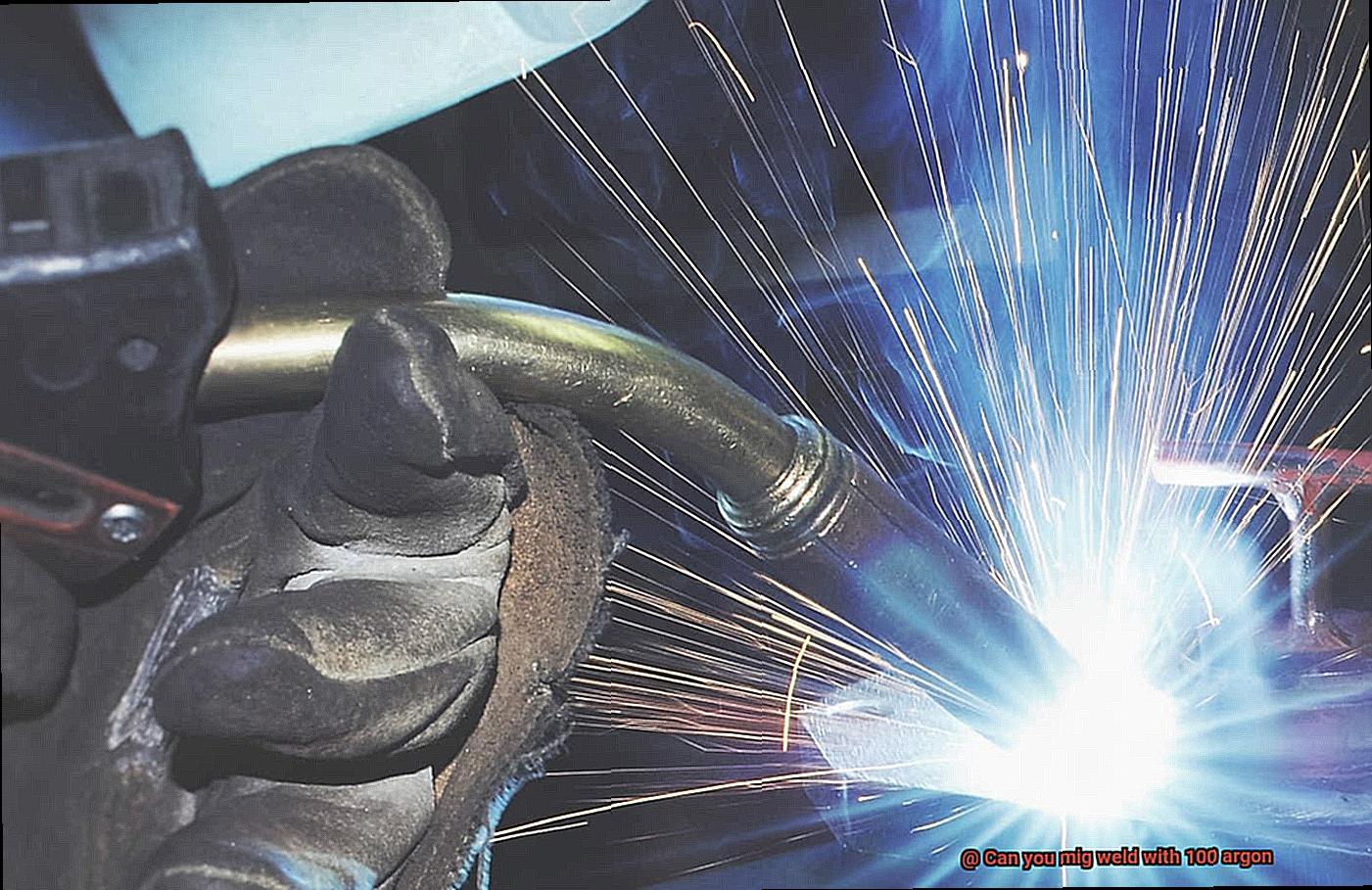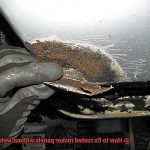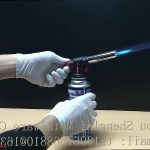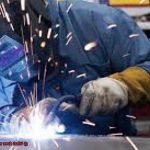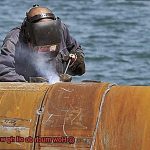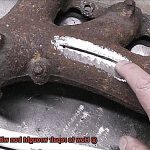Welding is an intricate craft that demands a welder’s extensive knowledge of welding techniques and tools to create a seamless weld.
One of the most popular welding methods is MIG welding, known for its versatility and simplicity. Shielding gas is crucial in protecting the weld from atmospheric gases that can damage it, with argon being the most commonly used gas.
But the question lingers: can you MIG weld with 100% argon? And is it a suitable choice?
This debate has sparked discussions among both professional welders and hobbyists alike. Typically, MIG welding employs a blend of argon and CO2, ranging from 5% argon and 95% CO2 to 80% argon and 20% CO2.
However, there has been a growing trend towards using pure argon as a MIG welding gas. In this blog post, we will delve into whether you can MIG weld with 100% argon while exploring the pros and cons of using pure argon in MIG welding.
So, come along on this journey as we unravel the mysteries of 100% Argon MIG welding.
Advantages of MIG Welding with 100% Argon
Contents
MIG welding is an art that requires a lot of skill, patience, and the right equipment, including the right shielding gas.
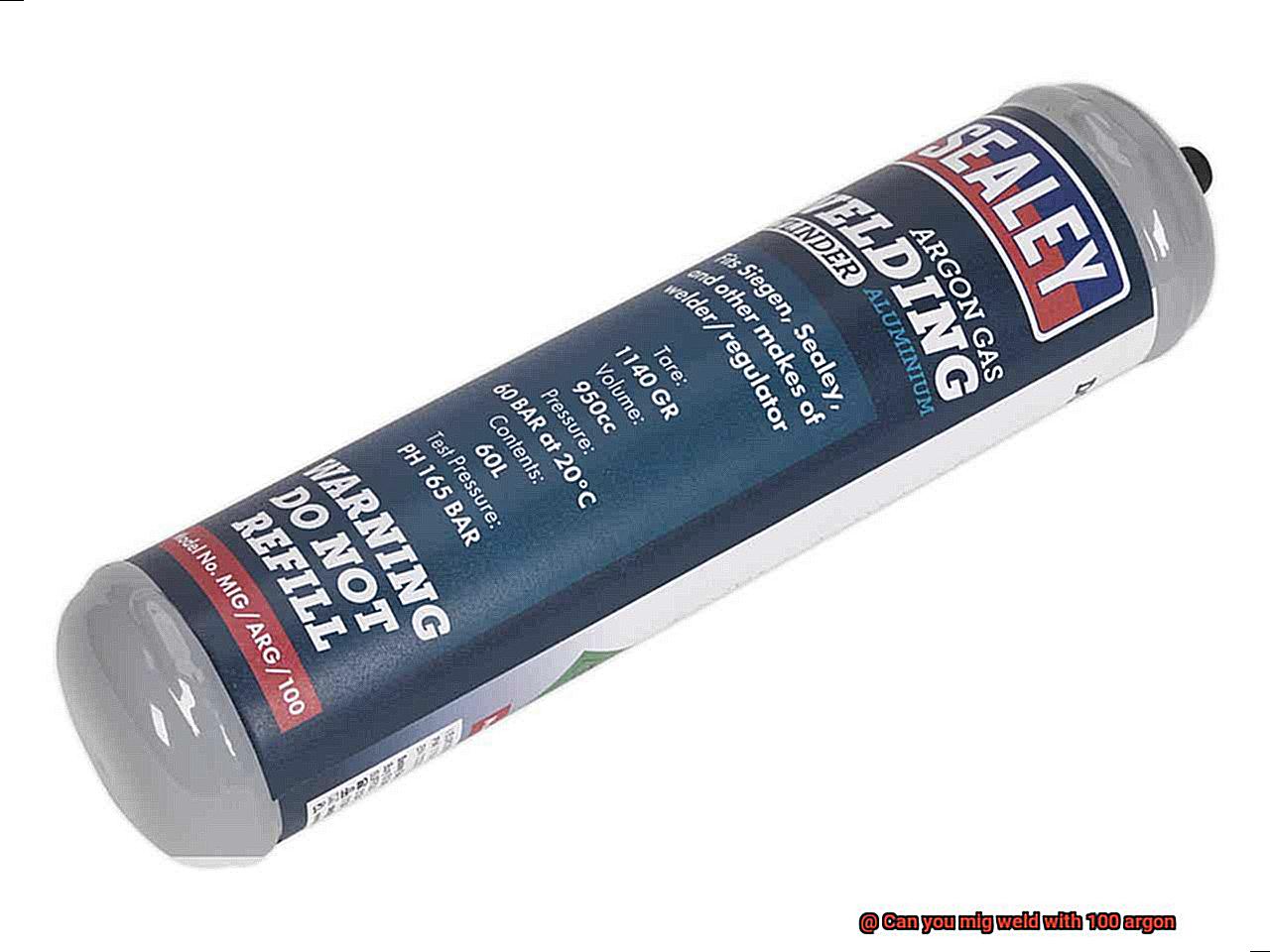
While there are many gases available, 100% argon is an excellent choice for MIG welding. Let’s explore some advantages of using this gas.
Firstly, MIG welding with 100% argon produces better weld quality, thanks to its stable arc that produces minimal spatter. This results in clean and smooth welds that look professional and polished.
Who wouldn’t want that? Secondly, this gas improves penetration, making it easier to weld thin materials.
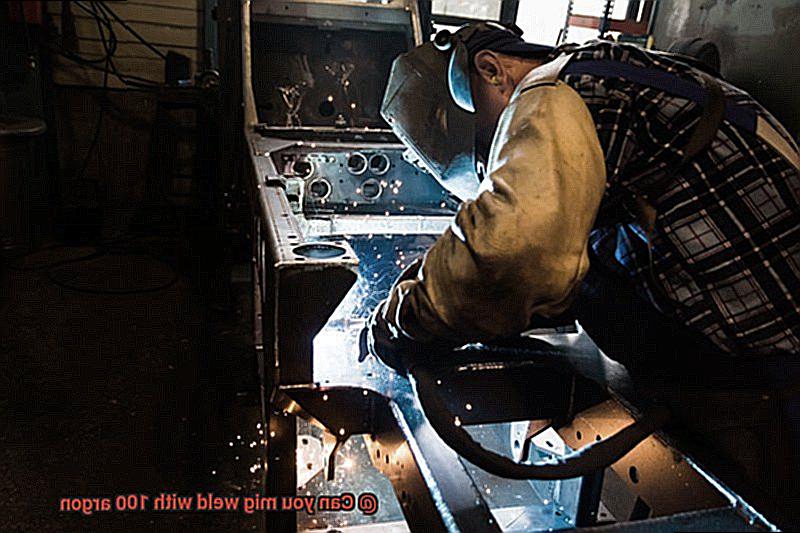
The heat is concentrated in a smaller area, which allows for deeper penetration. This means that you can weld thinner materials with greater ease and precision.
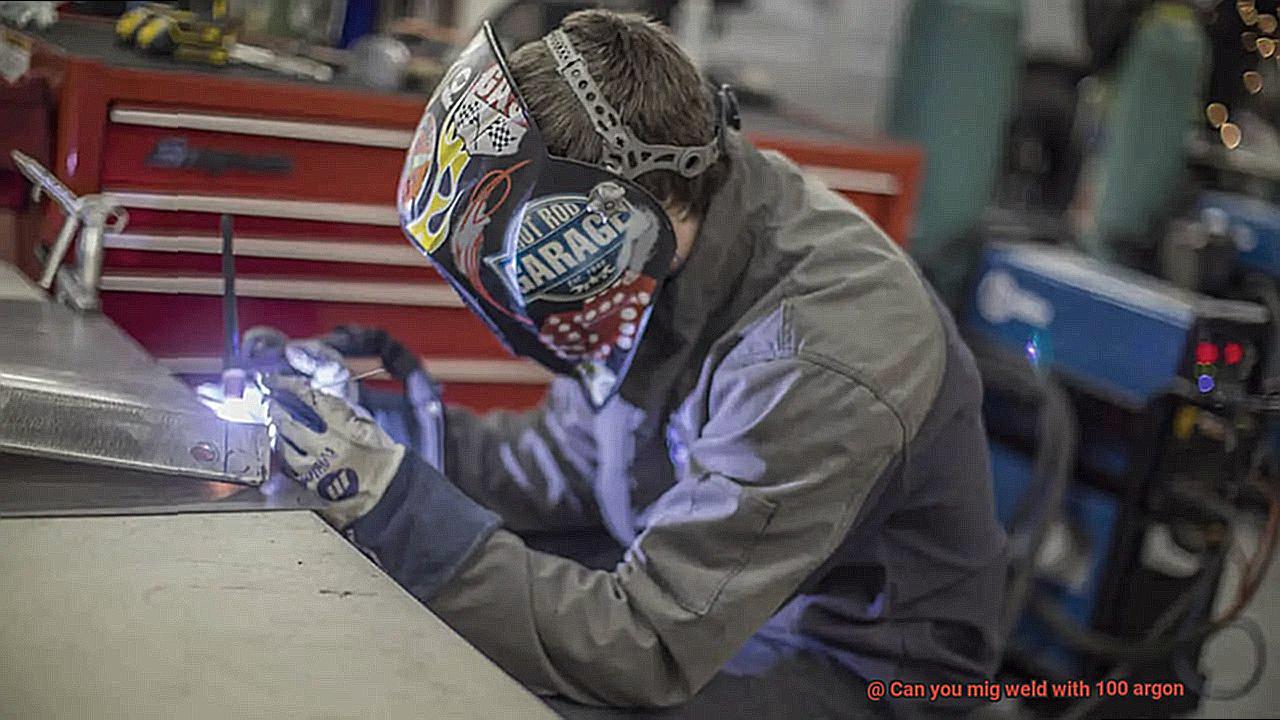
Thirdly, using 100% argon gas increases welding speed, allowing for higher amperage levels without compromising weld quality. This means that you can complete your welding projects faster while maintaining excellent weld quality.
Fourthly, MIG welding with 100% argon gas produces less spatter than other gases used for welding. This means that there is less post-weld cleaning required, saving time and effort and making the welding process more efficient.
Finally, while pure argon gas is more expensive than other gases used for MIG welding, it is more cost-effective in the long run. This is because it produces better quality welds with less rework required, resulting in lower costs overall.
So, if you’re looking to achieve high-quality welds while saving time and money, MIG welding with 100% argon gas is an excellent choice. It provides better weld quality, improves penetration and welding speed, reduces post-weld cleaning, and is cost-effective in the long run.
Disadvantages of MIG Welding with 100% Argon
If you’re a MIG welder, you know that choosing the right shielding gas is crucial to achieving clean and smooth welds.
While 100% argon may seem like a top-notch pick at first glance, there are some disadvantages to using it that you should be aware of. One major drawback of using pure argon for MIG welding is its lack of penetration.
As an inert gas, it doesn’t react with the metal being welded, which means it can’t create the necessary heat for proper penetration. It’s like trying to build a fire with wet wood – it just won’t light up.
Cost is another significant issue when using 100% argon as a shielding gas. Argon is one of the most expensive gases used in welding, and using it as the sole shielding gas can quickly drive up costs.
Additionally, since pure argon has a relatively low density, more gas must be used to achieve the necessary coverage area. It’s like trying to fill up a pool with a garden hose – it will take forever.
Weld spatter is another disadvantage of using pure argon for MIG welding. Small droplets of molten metal are expelled from the weld pool during welding, resulting in a mess and extra cleanup time.
Since argon doesn’t provide as much shielding as other gases, spatter can become a bigger problem when using pure argon. It’s like trying to eat spaghetti without a napkin – you’ll end up with sauce all over your face.
Finally, using 100% argon can lead to issues with arc stability. This instability can result in inconsistent welds or even cause the wire to burn back into the contact tip, damaging equipment and requiring downtime for repairs.
It’s like trying to ride a bike without handlebars – it might be fun at first, but you’ll eventually crash. While it’s technically possible to use 100% argon for MIG welding, it’s not ideal for most applications.
Where to Buy Argon Gas for MIG Welding?
Let’s explore the advantages and disadvantages of each option, so you can make an informed decision. First up, welding supply stores.
These stores specialize in providing all the necessary tools and equipment for welding, including gas cylinders. One of the significant benefits of purchasing argon gas from a welding supply store is their knowledgeable staff.
They have the expertise to help you choose the right type of argon gas for your specific welding needs. Plus, they offer multiple sizes of gas cylinders, so you can find one that fits your budget and requirements.
However, one downside of buying argon gas from a welding supply store is that it may not be the most cost-effective option. Prices can vary depending on location and demand, so it’s essential to do your research and compare prices before making a purchase.
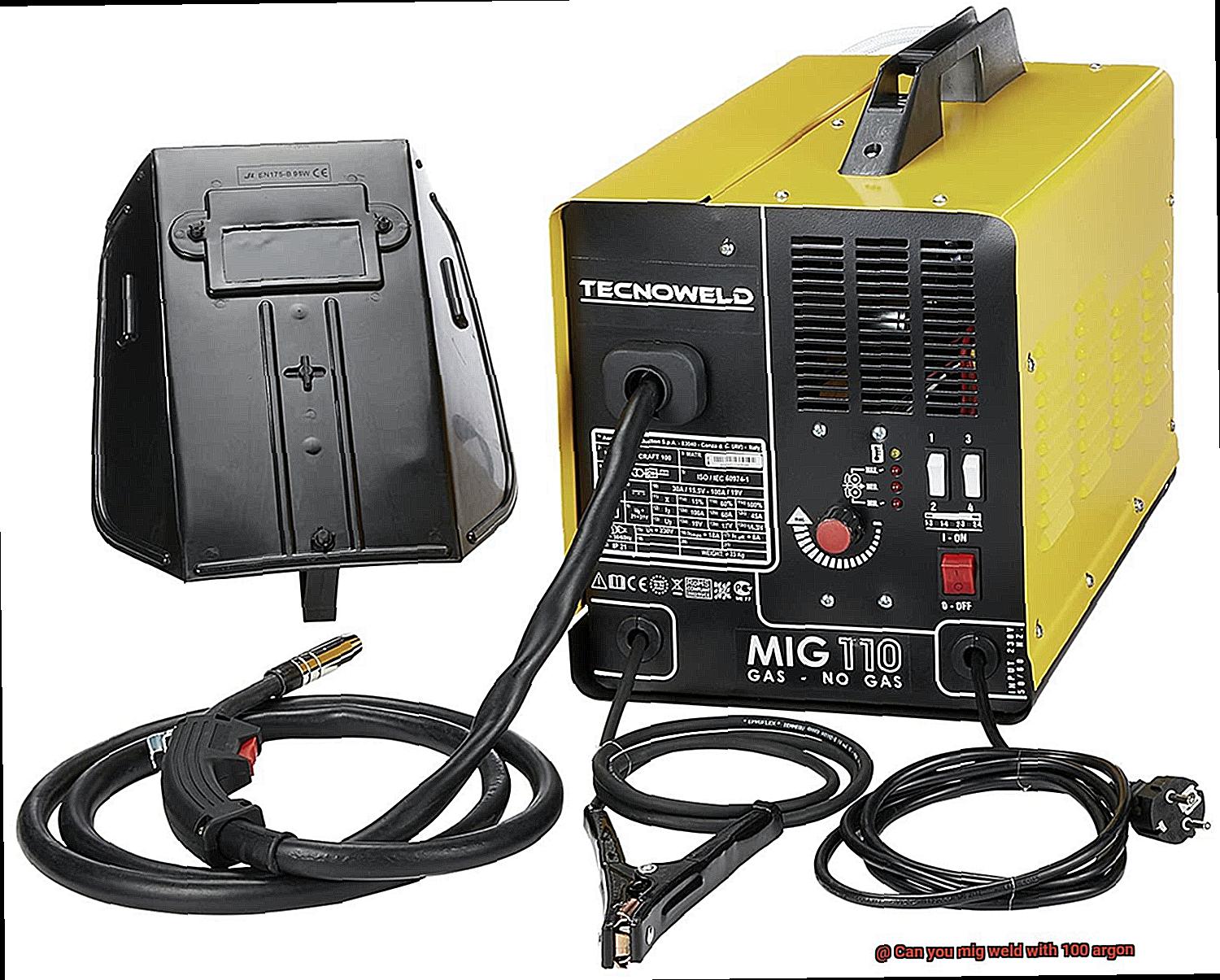
Next up, gas distributors. These companies specialize in supplying various gases to different industries, including welding.
One benefit of buying argon gas from a gas distributor is their wide range of gases available in different cylinder sizes. However, you may need to fill out some paperwork or provide proof of certification before purchasing the gas.
Another disadvantage of purchasing argon gas from a gas distributor is that they may not have the same level of expertise as welding supply stores when it comes to MIG welding. It’s crucial to ensure that they provide accurate information to avoid any mishaps during your welding project.
Lastly, online retailers offer convenience and flexibility as you can place an order from the comfort of your home or office. Moreover, prices are often competitive compared to brick-and-mortar stores.
However, one drawback of buying argon gas online is that you cannot inspect the cylinder before purchasing it. Therefore, you need to make sure that the retailer is reputable and reliable before placing an order.
Each option has its unique advantages and disadvantages, so be sure to do your research and choose a supplier that meets your requirements and budget.
What is the Best Gas for MIG Welding Mild Steel?
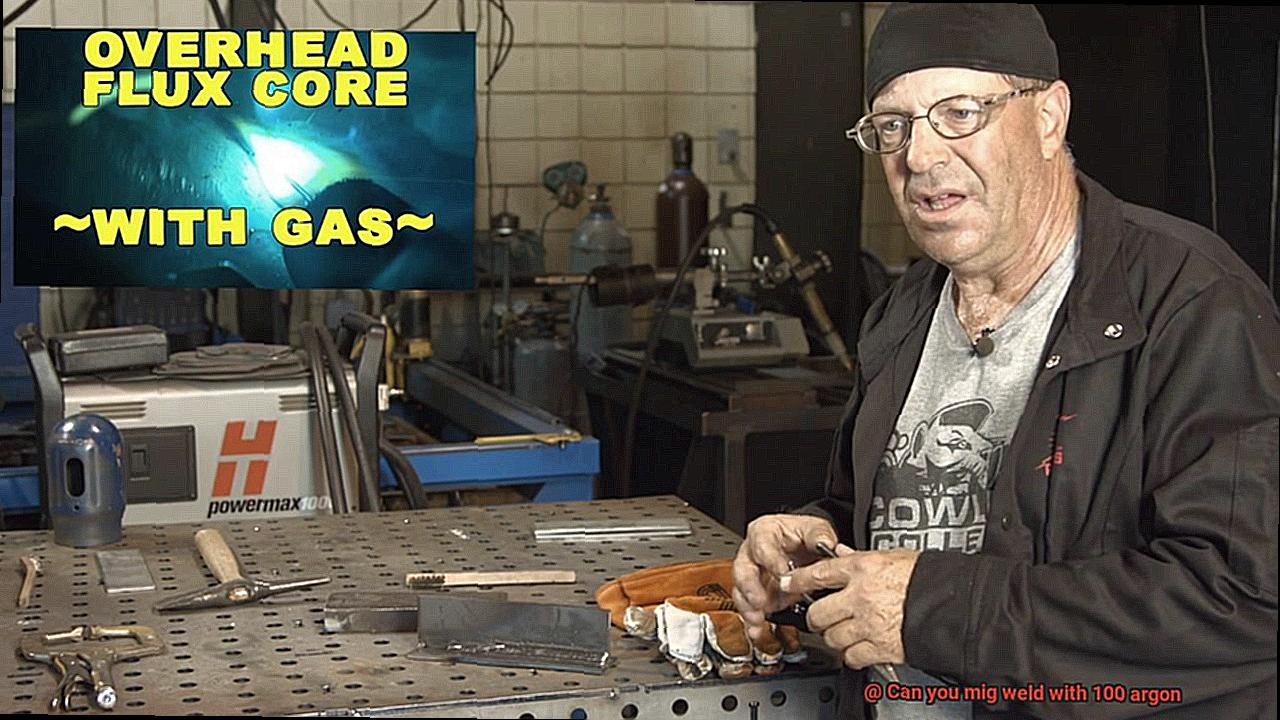
When it comes to MIG welding mild steel, choosing the right gas mixture is crucial for achieving high-quality welds.
But what is the best gas for MIG welding mild steel? Experts recommend a combination of argon and carbon dioxide.
One of the main reasons why argon and carbon dioxide gas mixture is a popular choice for MIG welding is because it offers several benefits. This gas mixture provides excellent arc stability, deep penetration, and minimal spatter.
The ratio of argon to carbon dioxide in the mixture depends on the thickness of the material being welded. For thinner materials, a 75% argon and 25% carbon dioxide mixture is typically used.
For thicker materials, a 90% argon and 10% carbon dioxide mixture is recommended. While pure argon gas can be used for MIG welding mild steel, experts do not recommend it as it lacks reactive properties that are necessary for creating a stable arc and proper penetration.
Welding with pure argon can result in poor weld quality and excessive spatter. An alternative option for MIG welding mild steel is a tri-mix gas that combines argon, carbon dioxide, and helium.
This gas mixture provides even better arc stability, deeper penetration, and reduced spatter compared to traditional argon and carbon dioxide mixtures. However, it comes with a higher cost.
While pure argon gas can be used, it isn’t recommended as tri-mix gas provides even better results at a higher cost.
Do You Use Pure Argon for MIG Welding?
Well, the short answer is no, especially when working with mild steel.
Think of it like baking a cake without the right ingredients – it just won’t turn out right. While pure argon is a popular choice for TIG welding and MIG welding aluminum, it falls short when it comes to MIG welding mild steel.
The reason for this is that it doesn’t provide enough thermal conductivity to effectively transfer heat from the welding arc to the workpiece. This can lead to a narrow weld with high penetration that may be prone to defects like cracking.
Thankfully, there’s a simple solution to this problem – using a gas mixture of argon and carbon dioxide or oxygen. This combination provides better thermal conductivity and creates a more stable arc, resulting in high-quality welds with reduced spatter.
When working with mild steel, the recommended gas mixture is 75% argon and 25% carbon dioxide. This mixture provides excellent penetration and arc stability while reducing spatter.
However, keep in mind that using the correct gas mixture is just one piece of the puzzle when it comes to producing top-notch welds. Proper technique is also crucial, including maintaining the correct distance between the welding gun tip and workpiece, using the appropriate wire feed speed, and keeping a steady travel speed.
By combining these factors along with the proper gas mixture, you’ll be well on your way to creating strong, durable welds. So next time you’re tempted to use pure argon gas for MIG welding mild steel, remember – it’s like trying to make a cake without flour.
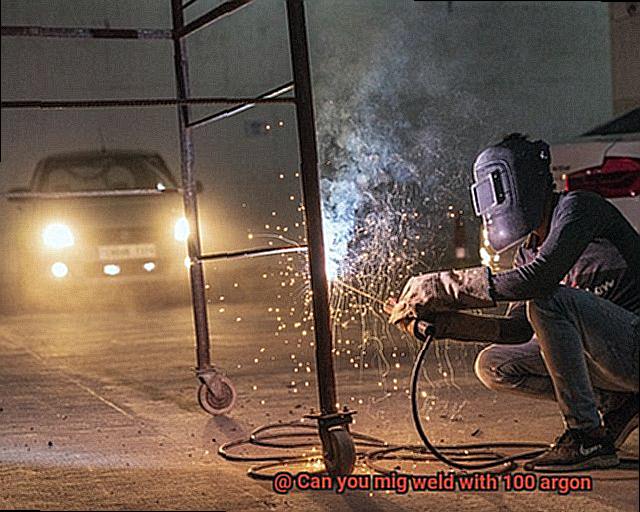
What Percentage of Argon for MIG Welding?
When it comes to MIG welding, the percentage of argon gas used is a crucial factor that determines the quality of your welds.
If you’re starting out in MIG welding, you might wonder what percentage of argon to use for optimal results. Well, the answer is not straightforward as it depends on the thickness and type of metal being welded.
Mild steel is one of the most commonly welded metals, and for that, a mixture of argon and carbon dioxide is usually used. The ratio may vary from 75-95% argon and 5-25% carbon dioxide, depending on the specific application and metal thickness.
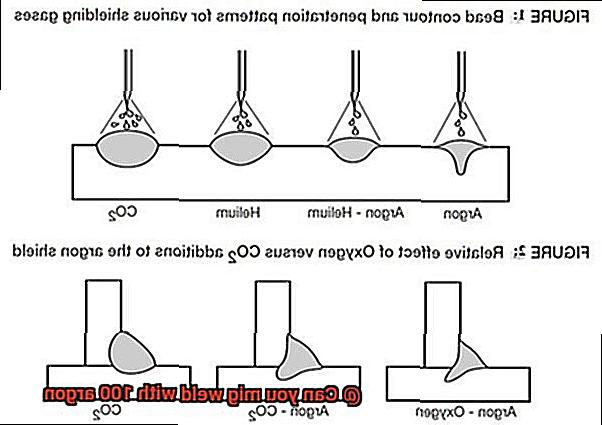
If you want high-quality welds with a cleaner appearance, then a higher percentage of argon in the mix is recommended. However, keep in mind that this will increase the cost of gas.
On the other hand, if you want to save on costs, a lower percentage of argon can be used. However, this may result in a weld appearance that’s not as clean.
It’s all about finding the right balance between cost and quality. Now, there’s a common misconception that 100% argon can be used for MIG welding – this isn’t recommended.
Pure argon doesn’t provide enough shielding to prevent oxidation and contamination during the welding process. As a result, welding with pure argon can lead to weaker welds with lower tensile strength.
In summary, when it comes to MIG welding, the percentage of argon used in the gas mixture will depend on the specific application and metal being welded. It’s crucial to strike the right balance between cost and quality by selecting the appropriate ratio of argon and carbon dioxide.
Using pure argon for MIG welding is not recommended – think of it like baking a cake without flour; it just won’t turn out right.
y6Jy7mTJ5cU” >
Conclusion
To sum up, MIG welding is a simple and versatile method that requires proper tools and techniques to achieve seamless welds.
Shielding gas plays a crucial role in protecting the weld from atmospheric gases that can cause damage, and argon is the most commonly used gas. Although 100% argon has its benefits for MIG welding, it’s not always the best choice.
While it can produce better weld quality, improve penetration and welding speed, reduce post-weld cleaning, and be cost-effective in the long run, it also has disadvantages such as lack of penetration, high cost, more gas usage due to low density, spatter issues, and arc stability problems. For MIG welding mild steel, experts recommend using a combination of argon and carbon dioxide or oxygen for optimal results.
The ratio of argon used in the gas mixture will depend on the specific application and metal being welded. It’s essential to find a balance between cost and quality by selecting the appropriate ratio of argon and carbon dioxide.
In conclusion, while pure argon may seem like an excellent choice for MIG welding at first glance due to its advantages, it’s not suitable for most applications.
